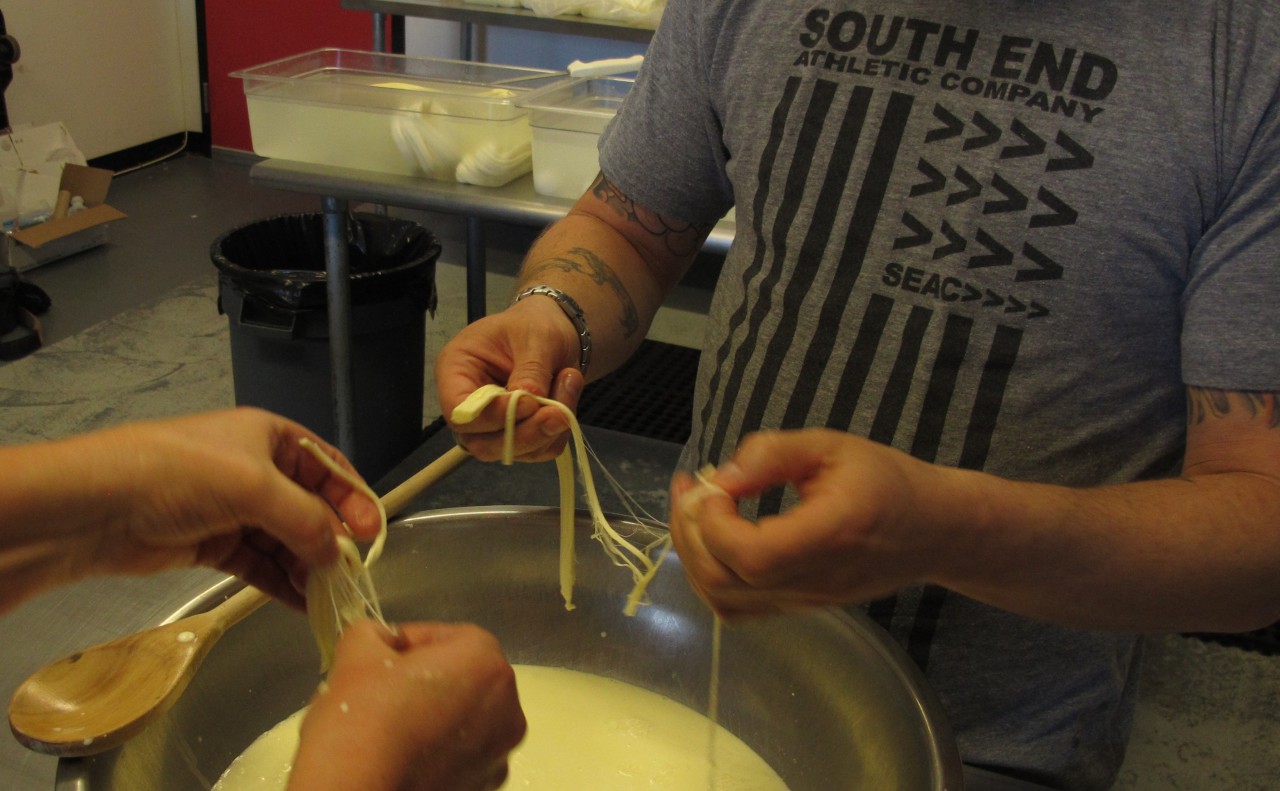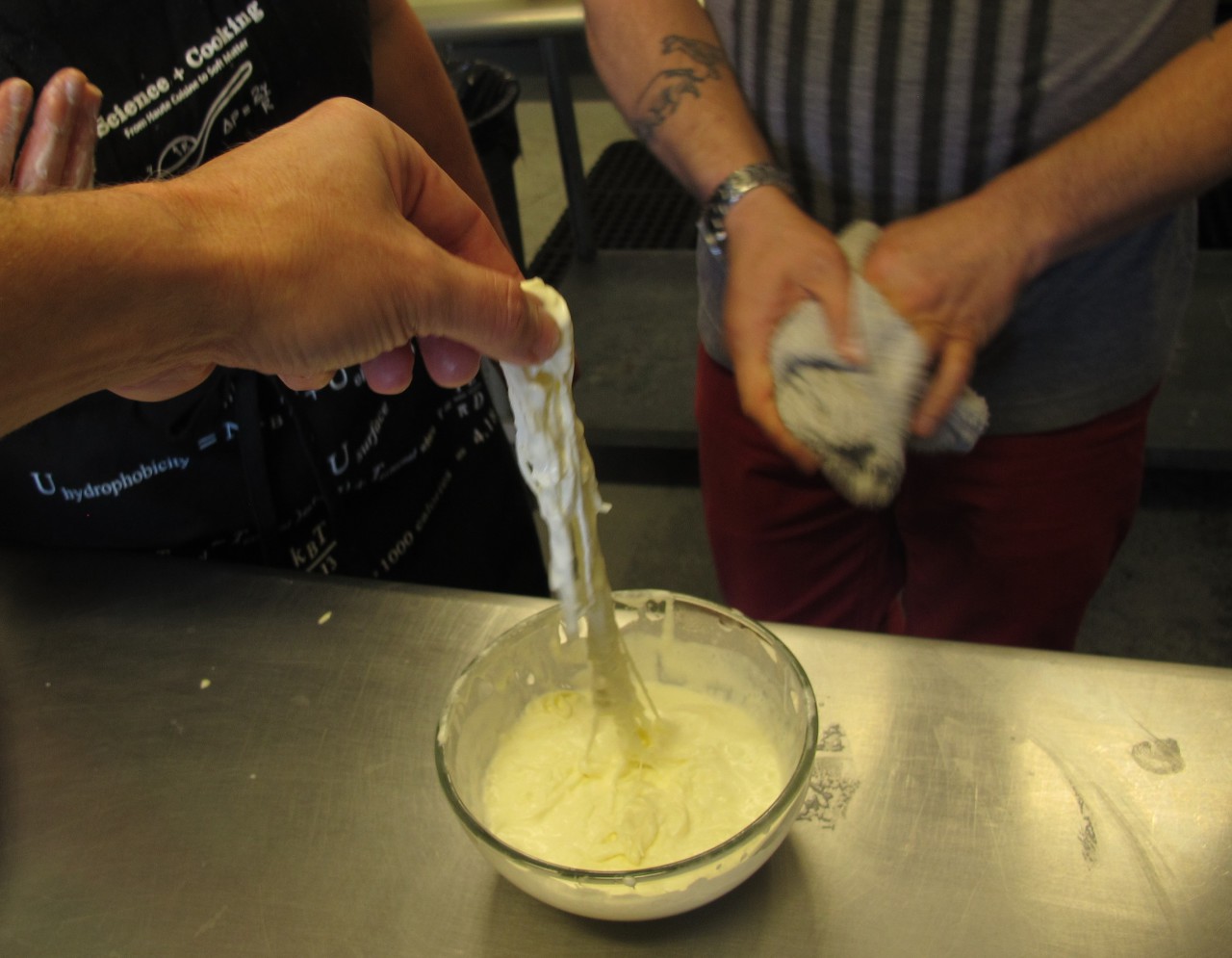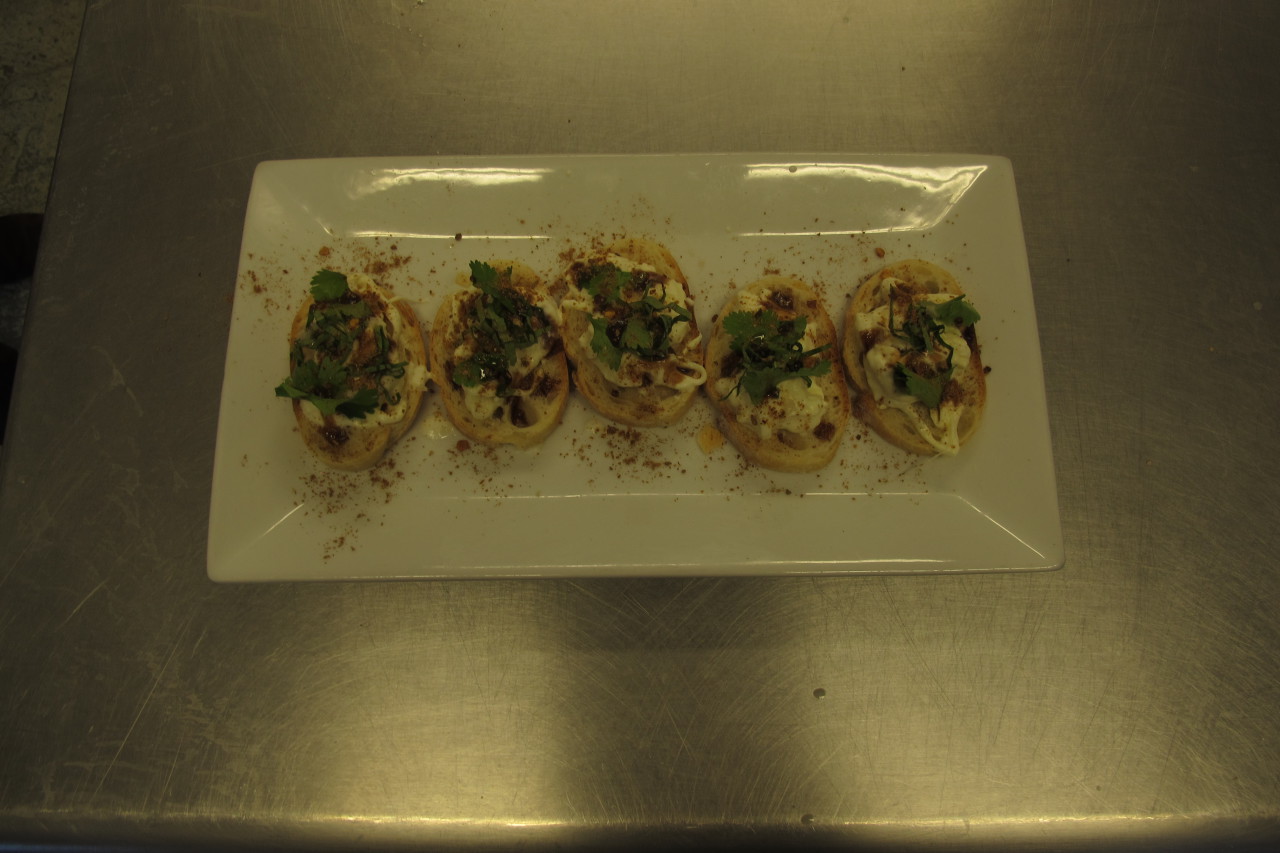Advertisement
Farm To Fork: Cheesemaking Tradition Born In Italy, Thriving In Somerville
ResumeFor our occasional food series, Farm to Fork, we went to a small Somerville office park near a junk car lot. Inside, behind a red door there's a kitchen and a little piece of Italy.
According to Tremont 647 chef and owner Andy Husbands, this kitchen has some of the best mozzarella around.
The company is called Fiore de Nonno — or "grandfather's flower." It's owned by Lourdes Smith, who comes from an Italian family with a long history of cheesemaking that began with her great-grandfather.

"Alphonso Fiore sold his buffalo farm in Pula, Italy and came to the United States in 1908," says Smith. "He brought his five children. They were all cheesemakers, my grandfather being the youngest. They would make fresh mozzarella in metro New York and New Jersey, and so it was sort of the first family of mozzarella-making in the metro area."
Smith's grandfather sold the business back in 1962, and when she grew up, she trained as a pastry chef, then worked as a manager at Panera Bread. But the family cheesemaking tradition called her back. So she went to New Jersey — to the store that her grandfather used to own — and studied the craft with the new owner and learned how to do it herself.
"My mom was born above the store in Hoboken, so she sort of has this institutional memory of what my grandfather was making," says Smith. "I just kept feeding her cheese — I was practicing out of a five quart Le Creuset stock pot and I just practiced and practiced and practiced and she finally said, months into this, you've got it."
We began in Smith's kitchen by making mozzarella, which starts with curds from Shy Brothers Farm. The curds sit in a bath of cool water, and then Smith uses hot water to warm them. After that, she begins a careful process of stretching the curds with her hands — slowly and carefully.
"If you go to Eataly down in New York, it makes me a little crazy," says Smith. "Because I questioned why I go through this effort of doing this this way. When I watch them just pour boiling, salted water on top of curds, they moved it for about two minutes and then started making cheese and started selling it for $15 a pound I was like — why? Why am I doing what I'm doing? But I really want to stick to what my grandfather did."
Smith works the curds — which were originally crumbly — into what looks like a very soft pizza dough. Then, she molds the new cheese into bocconcini — mouthful-sized mozzarella balls, which are delicious.
"At first you get this kind of salt wash that introduces — or maybe kind of excites the palate," says Husbands. "Then comes this creamy, rich, super tender, delicious cheese."
It's almost like you can taste the generations of love for cheesemaking.
"Oftentimes, we've gotten so used to mozzarella that is made with a machine and it's like a rubber ball and there's not a lot of flavor and you're chewing constantly," says Smith. "Right now, at this point, I'm competing against machines."

And those machines are producing lots of mozzarella. In fact, according to Smith, mozzarella has overtaken cheddar as America's favorite cheese. But not everyone makes it this way, which explains why Smith has to charge quite a bit for it.
"There is a lot that goes into this, and I love really standing at a farmer's market and really giving somebody who is really doubtful about why they're going to pay the money that I'm asking them to pay and I give them a sample of the cheese and their face just lights up, like, 'Oh, I get this now,'" says Smith. "And, not to get lost in all of this is how this helps our local economy. So, in the town of Westport, in five years they lost 14 dairy farms because of industrialized farming. My employees get paid a livable wage. That is part of the cost of the cheese, is that we're working on employing people locally, using local agriculture and lifting them up because it's just so important."
Important, and delicious. But we're not done yet. To make stracciatella, Smith drops the cheese into a bowl of cream, then pulls the cheese apart into delicate, creamy threads. In fact, it looks like a really cool version of string cheese, according to Husbands.
When we taste it, there's a whole new dimension to it. It's no longer a ball of mozzarella. Instead, it looks like spaghetti in a really white cream sauce. And it is, in the words of Husbands, sublime.
Guests
Andy Husbands, chef and owner at Tremont 647 and author of "Grill to Perfection." He tweets @andyhusbands.
Lourdes Smith, owner and cheesemaker at Fiore de Nonno, which tweets @FioreDiNonno.
Stracciatella Crostini

Ingredients:
french loaf, sliced into quarter-inch thick pieces
stracciatella cheese
fresh basil
fresh cilantro
north African spice mix (can include cumin, fennel, cinnamon, etc.)
balsamic reducation
Instructions:
1 Pile stracciatella cheese onto piece of french loaf
2 Slice basil leaves into ribbons, place on top of cheese
3 Rip cilantro leaves in halves, place one half on each slice
4 Sprinkle on north African spice mix
5 Drizzle on a small amount of balsamic reduction
6 Enjoy!
More
Boston Magazine: Supply Chain: Mozzarella Magic At Somerville’s Fiore Di Nonno
- "Smith’s grandfather, the youngest in a family of cheesemakers, arrived in America from Italy in 1908. In 1913, his father opened Fiore’s in Hoboken, a spot that became a go-to for the Sinatra family and a staple in the neighborhood."
This segment aired on December 4, 2014.